31st March 2008 - New book
Life in the Balance : A physician's memoir of
life, love, and loss with Parkinson's Disease and Dementia
Thomas Graboys, Peter
Zheutlin
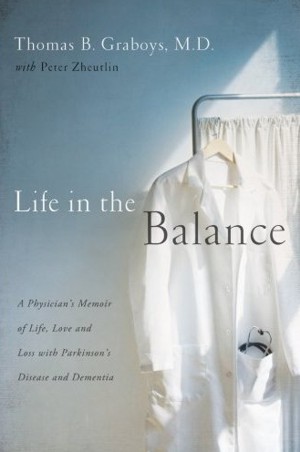 At
the age of 49, Dr. Thomas Graboys had reached the pinnacle of his career
and was leading a charmed life. A nationally renowned Boston cardiologist
popular for his attention to the hearts and souls of his patients. He had
a beautiful wife, two wonderful daughters, and a thriving private
practice. Today, Graboys is battling a particularly aggressive form of
Parkinson�s disease and progressive dementia, and can no longer see
patients. Despite the physical, mental and emotional toll he battles
daily, Graboys continues by telling his story so that others may find
comfort, inspiration, or validation in their own struggles. His is not a
sugar-coated story with a silver lining; brutally honest and direct, this
is an unflinching memoir of a devastating illness.
�Click here for more details�
At
the age of 49, Dr. Thomas Graboys had reached the pinnacle of his career
and was leading a charmed life. A nationally renowned Boston cardiologist
popular for his attention to the hearts and souls of his patients. He had
a beautiful wife, two wonderful daughters, and a thriving private
practice. Today, Graboys is battling a particularly aggressive form of
Parkinson�s disease and progressive dementia, and can no longer see
patients. Despite the physical, mental and emotional toll he battles
daily, Graboys continues by telling his story so that others may find
comfort, inspiration, or validation in their own struggles. His is not a
sugar-coated story with a silver lining; brutally honest and direct, this
is an unflinching memoir of a devastating illness.
�Click here for more details�
����������������������������������������������������������������������������������������������������������������������������������������������������������������������������������
30th March 2008 - New research
ADVERSE EVENTS AFTER DBS SURGERY
Movement Disorders
[2008] 23 : 343-349 (A Videnovic, L Verhagen Metman)
Complete abstract
DBS is a surgical method of treating
Parkinson's Disease that
uses
electrodes implanted into the brain.
For more information go to
Deep Brain Stimulation.
Traditionally, the two most common sites in the brain used in surgery are the
subthalamic nucleus (STN) and the globus pallidus interna (GPi).�
The authors analysed
reports of adverse events from over a thousand patients who had undergone DBS
surgery.
The most common adverse events were, in
order : weight
gain, then confusion, then speech difficulties. Neither part of the brain
that was used had clearly fewer adverse events than the other.
�Adverse events related to
DBS surgery are common, but the study authors concluded that their true
prevalence cannot be accurately determined with current reporting methods.
For more information go to the
Complete article�
The most common adverse events were :
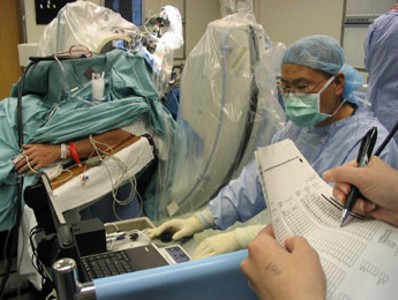 Procedure related events (% of STN / % of GPi)
:
Mental status / behaviour (mostly
confusion) 18% / 9%, Infection 2% / 3%, ICH-symptomatic 2% / 4%,
Misplaced electrode
2% / 2%, Speech disturbance 2% / 4%, Infarction 1% / 2%.
Procedure related events (% of STN / % of GPi)
:
Mental status / behaviour (mostly
confusion) 18% / 9%, Infection 2% / 3%, ICH-symptomatic 2% / 4%,
Misplaced electrode
2% / 2%, Speech disturbance 2% / 4%, Infarction 1% / 2%.
Stimulation or
progression related events
(% of STN / % of GPi) :
Weight gain 37% /
18%,
Dysarthria (speech disorder) 13% / 12%, Eye
opening apraxia 11% / 0%,
Gait ignition failure
0% / 17%.
Hardware-related
events (Combined % of STN and
GPi) : One or more events 9%, Infection 2%, Malfunctioning 1%, Lack of benefit
1%.
�
29th March 2008 - New research
HEAD INJURY CAUSING PARKINSON'S
DISEASE
American journal of neuroradiology
[2008] 29 (2) : 388-391 (H�hnel S, Stippich C, Weber I,
Darm H, Schill T, Jost J, Friedmann B, Heiland S, Blatow M, Meyding-Lamad�
U.)
Complete abstract
Parkinsonism Related
Disorders [2008] Mar 24; [Epub ahead of print] (Spangenberg S, Hannerz H,
Tuchsen F, Mikkelsen KL.)
Complete abstract
A few years after the end of his boxing
career during which he was the three time world heavyweight world
champion, Muhammad Ali was diagnosed with Parkinson's Disease. It has been
widely both claimed and denied that he had developed Parkinson's Disease
due to blows to the head he received as a boxer. In boxing, the head is
hit at a high speed and with great force. This can lead to shear movement
between different brain tissues,
resulting
in microhemorrhages.
 In the �Heidelberg Boxing Study� high-resolution MRI
data were used to search for tiny
changes in the brains of amateur boxers and a comparison group of
non-boxers. These changes were suggested as the most likely precursors for
later severe brain damage in Parkinson�s Disease. Microhemorrhages were
found in some of the boxers, while in the comparison group of non-boxers
there were no such changes. However the difference between the two groups
was found to be statistically insignificant. So there was no evidence that
boxing causes Parkinson's Disease.�����
In the �Heidelberg Boxing Study� high-resolution MRI
data were used to search for tiny
changes in the brains of amateur boxers and a comparison group of
non-boxers. These changes were suggested as the most likely precursors for
later severe brain damage in Parkinson�s Disease. Microhemorrhages were
found in some of the boxers, while in the comparison group of non-boxers
there were no such changes. However the difference between the two groups
was found to be statistically insignificant. So there was no evidence that
boxing causes Parkinson's Disease.�����
Another study assessed the association
between severe head injury and Parkinson's disease. Everybody in Denmark
who was older than 20 at the beginning of 1981 was followed for the next
three years for hospitalisation due to previous head trauma, and for
hospital contacts due to Parkinson's Disease for the following 20 years.
The number of observed cases of Parkinson's Disease among people at
hypothetical risk due to previous head injury was even less than would be
generally expected. So contrary to what is widely assumed, the study
provides no support at all for severe head injury among adults being a
risk factor for Parkinson's disease.
���������������������������������������������������������������������������������������������������
28th March 2008 - New research
PESTICIDE EXPOSURE DOUBLED IN PARKINSON'S
DISEASE
BMC Neurology [2008]8:6 (28 March 2008) (Dana
B Hancock, Eden R Martin, Gregory M Mayhew, Jeffrey M Stajich, Rita
Jewett, Mark A Stacy, Burton L Scott, Jeffery M Vance, William K Scott)
Complete study
A study of more than 300 people with Parkinson's Disease found that they
were more than twice as likely to report heavy exposure to pesticides over
their lifetime as family members without Parkinson's Disease.
 The
strongest
associations
were between people with Parkinson's who had been exposed to herbicide and
insecticide chemicals such as organochlorides and organophosphates. No
links were found between Parkinson's disease and drinking well-water or
living or working on a farm. People tended to be those who used a lot of
pesticides in their homes and in their hobbies. There were not many people
who routinely used pesticides for their occupation. There are several
pesticides known to cause Parkinson's Disease, as well as other toxic
causes. For more information go to
Toxic causes of Parkinson's Disease.
The
strongest
associations
were between people with Parkinson's who had been exposed to herbicide and
insecticide chemicals such as organochlorides and organophosphates. No
links were found between Parkinson's disease and drinking well-water or
living or working on a farm. People tended to be those who used a lot of
pesticides in their homes and in their hobbies. There were not many people
who routinely used pesticides for their occupation. There are several
pesticides known to cause Parkinson's Disease, as well as other toxic
causes. For more information go to
Toxic causes of Parkinson's Disease.
�
26th March 2008 - New research
THE MAIN CAUSE OF DEATH IN PARKINSON'S DISEASE
Parkinsonism Related Disorders [2008] Mar 19;
[Epub ahead of print] (Nobrega AC, Rodrigues B, Melo A.)
Complete abstract
The main cause of death due to
Parkinson's Disease
is respiratory
infection. The reduced function of the respiratory muscles in Parkinson's
Disease causes respiratory infections to be particularly dangerous. This
study assessed whether Silent laryngeal penetration or Silent aspiration (SLP/SA)
increases the likelihood and seriousness of respiratory infections in
Parkinson's Disease. Silent
Aspiration is when fluid or solids are sucked into the airway when
breathing in, and when there is no coughing to quickly rid it. Silent
Laryngeal Penetration is when material
enters
the top of the airway and is
subsequently removed during the swallowing.
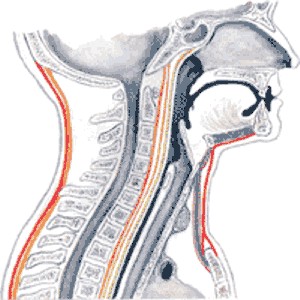 People with Parkinson's
Disease who produced excessive saliva during the day were evaluated. Of
those in which
Silent laryngeal
penetration or silent aspiration (SLP/SA) was observed, most developed
respiratory infection. Some of them died of it.
The authors claim that the results suggest
that patients with Parkinson's disease with diurnal sialorrhea (excessive
saliva during the day) and SLP/SA have an increased risk of respiratory
infections, which is the main cause of death in Parkinson's Disease
patients. The data support a greater emphasis on preventive measures
regarding these issues in order to improve survival in people with
Parkinson's disease.
People with Parkinson's
Disease who produced excessive saliva during the day were evaluated. Of
those in which
Silent laryngeal
penetration or silent aspiration (SLP/SA) was observed, most developed
respiratory infection. Some of them died of it.
The authors claim that the results suggest
that patients with Parkinson's disease with diurnal sialorrhea (excessive
saliva during the day) and SLP/SA have an increased risk of respiratory
infections, which is the main cause of death in Parkinson's Disease
patients. The data support a greater emphasis on preventive measures
regarding these issues in order to improve survival in people with
Parkinson's disease.
�
25th March 2008 - New research
RESTLESS LEGS SYNDROME IN PARKINSON'S DISEASE
Movement Disorders [2007] 22 (13) : 1912-1916
(Gomez-Esteban JC, Zarranz JJ, Tijero B, Velasco F, Barcena J, Rouco I,
Lezcano E, Lachen MC, Jauregui A, Ugarte A.)
Complete abstract
Restless legs Syndrome is characterized by an urge to move your legs, and
to a lesser extent� your arms. It tends to be worse at night. For
more information go to
Restless Legs Syndrome. This study explored the frequency of Restless
Legs Syndrome in Parkinson's Disease.
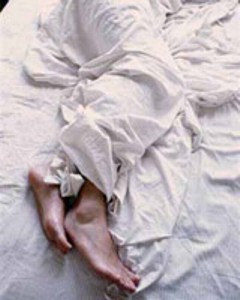 It focused on the clinical
differences between patients with and
without
Restless Legs Syndrome (RLS). They used specific scales : Unified
Parkinson's Disease Rating Scale (UPDRS I-IV), quality of life
(Parkinson's Disease Questionnaire, PDQ 39), sleep symptoms (Parkinson's
Disease Sleep Scale, PDSS), and diurnal hypersomnia (Epworth Sleepiness
Scale). Over 20% of people with Parkinson's Disease were found to also
suffer from Restless Legs Syndrome (RLS). RLS was found to be far more
common in women. More than two thirds of those with RLS were women. Those
with RLS suffered more from lack of sleep, and body discomfort. Although
RLS is frequent in patients with Parkinson's Disease, it does not appear
to affect the quality of life by any other means.
It focused on the clinical
differences between patients with and
without
Restless Legs Syndrome (RLS). They used specific scales : Unified
Parkinson's Disease Rating Scale (UPDRS I-IV), quality of life
(Parkinson's Disease Questionnaire, PDQ 39), sleep symptoms (Parkinson's
Disease Sleep Scale, PDSS), and diurnal hypersomnia (Epworth Sleepiness
Scale). Over 20% of people with Parkinson's Disease were found to also
suffer from Restless Legs Syndrome (RLS). RLS was found to be far more
common in women. More than two thirds of those with RLS were women. Those
with RLS suffered more from lack of sleep, and body discomfort. Although
RLS is frequent in patients with Parkinson's Disease, it does not appear
to affect the quality of life by any other means.
�
24th March 2008 - New research
CLONED CELLS RID PARKINSON'S DISEASE IN MICE
Nature Medicine [2008] Mar 23; [Epub
ahead of print] (Viviane Tabar, Mark Tomishima, Georgia Panagiotakos,
Sayaka Wakayama, Jayanthi Menon, Bill Chan, Eiji Mizutani, George Al-Shamy,
Hiroshi Ohta, Teruhiko Wakayama & Lorenz Studer)
Complete abstract
Researchers are claiming that therapeutic
cloning has been used to successfully treat Parkinson's Disease in mice.
In therapeutic cloning, the nucleus of a cell is inserted into an egg with
the nucleus removed. This cell then develops into an embryo from which
stem cells can be harvested and used as a treatment. In this study, stem
cells were developed into dopaminergic neurons, the cells whose reduced
activity causes Parkinson's Disease. Researchers see this as a means of
creating a person's own embryonic stem cells. For
more information go
to
the
Complete article.
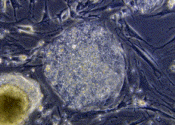 Despite what has been widely reported,
the mice did not actually have Parkinson's Disease. They were not rid of
all artificially induced Parkinson's Disease symptoms either. The
researchers did not check for persistent effects, as the mice were
assessed for less than three months. Stem cell surgery operations are
already being carried out almost every day involving Parkinson's Disease.
Yet they have not rid anyone of Parkinson's Disease. Stem cell surgery is
based on the assumption that people with Parkinson's Disease are suffering
a massive loss of dopamine producing cells. Despite this being widely
claimed, no research has ever shown this to be true.
Despite what has been widely reported,
the mice did not actually have Parkinson's Disease. They were not rid of
all artificially induced Parkinson's Disease symptoms either. The
researchers did not check for persistent effects, as the mice were
assessed for less than three months. Stem cell surgery operations are
already being carried out almost every day involving Parkinson's Disease.
Yet they have not rid anyone of Parkinson's Disease. Stem cell surgery is
based on the assumption that people with Parkinson's Disease are suffering
a massive loss of dopamine producing cells. Despite this being widely
claimed, no research has ever shown this to be true.
��������������������������������������������������������������������������������������������������������������������������������������������������������������������������������� 23rd March 2008 - New research
HOW ALPHA-SYNUCLEIN EXACERBATES PARKINSON'S DISEASE
Neurochemical Research [2008] Mar 21; [Epub
ahead of print] (Liu D, Jin L, Wang H, Zhao H, Zhao C, Duan C, Lu L, Wu B,
Yu S, Chan P, Li Y, Yang H.)
Complete abstract
Alpha-Synuclein is the main component of Lewy
Bodies. Lewy Bodies can remove damaged elements from the cells involved in
Parkinson's Disease.
For more information go to
Alpha-Synuclein.
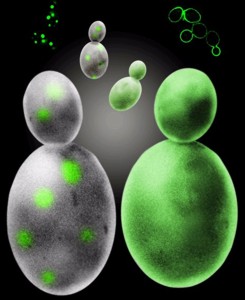 It has been claimed that
alpha-synuclein
is involved in the cause of
Parkinson's disease. Parkinson's Disease
normally occurs when the formation of dopamine is insufficient. Previous studies have shown that
alpha-synuclein is involved in the regulation of dopamine, possibly by
reducing the formation of tyrosine hydroxylase. Tyrosine hydroxylase is
responsible for the formation of L-dopa.� This study found that
alpha-synuclein did not interfere with the formation of tyrosine
hydroxylase. However, alpha-synuclein was still found to reduce the
activity of tyrosine hydroxylase, and by that means, reduce the formation
of L-dopa and dopamine. The reduced dopamine formation this leads to can
enable alpha-synuclein to exacerbate the symptoms of Parkinson's Disease.
It has been claimed that
alpha-synuclein
is involved in the cause of
Parkinson's disease. Parkinson's Disease
normally occurs when the formation of dopamine is insufficient. Previous studies have shown that
alpha-synuclein is involved in the regulation of dopamine, possibly by
reducing the formation of tyrosine hydroxylase. Tyrosine hydroxylase is
responsible for the formation of L-dopa.� This study found that
alpha-synuclein did not interfere with the formation of tyrosine
hydroxylase. However, alpha-synuclein was still found to reduce the
activity of tyrosine hydroxylase, and by that means, reduce the formation
of L-dopa and dopamine. The reduced dopamine formation this leads to can
enable alpha-synuclein to exacerbate the symptoms of Parkinson's Disease.
�
21st March 2008 - New research
NEW GENETIC FORM OF PARKINSON'S DISEASE
American Journal of Human Genetics [2008] Apr
11; [Epub
ahead of print] (Corinne Lautier, Stefano Goldwurm, Alexandra D�rr, Barbara
Giovannone, William G. Tsiaras, Gianni Pezzoli, Alexis Brice, Robert J.
Smith)
Complete study
According to this study, mutations in the
gene, known as GIGYF2, appear to be directly linked to the development of
Parkinson�s in people with a family history of the disease. GIGYF2 was
found to be located right in the centre of a chromosomal region called
PARK 11, a region that was initially identified through a genetic analysis
of families with Parkinson�s disease. The researchers identified seven
different forms of GIGYF2 mutations occurring in 12 different people,
which was approximately 5% of those in the study.
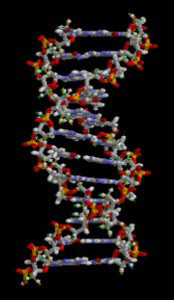 All of them had
relatives with Parkinson's
Disease.
Eight of these patients had at least one parent with Parkinson�s, one had both parents affected,
and three had
one sibling affected. When available, relatives with Parkinson�s were also sampled. Researchers
found they carried the same mutation, which led to single amino acid
substitutions in the protein encoded by the GIGYF2 gene. None of the
mutations were observed in those that did not have Parkinson's Disease.
For more information go to
the
Complete article.
All of them had
relatives with Parkinson's
Disease.
Eight of these patients had at least one parent with Parkinson�s, one had both parents affected,
and three had
one sibling affected. When available, relatives with Parkinson�s were also sampled. Researchers
found they carried the same mutation, which led to single amino acid
substitutions in the protein encoded by the GIGYF2 gene. None of the
mutations were observed in those that did not have Parkinson's Disease.
For more information go to
the
Complete article.
�
20th March 2008 - News report
NEUPRO BEING WITHDRAWN FROM USE
Neupro (rotigotine), is a dopamine agonist
formulated in a transdermal delivery system. For more information go to
Neupro. Belgian
drugmaker UCB said on Thursday it was recalling its Parkinson's patch
Neupro in the United States and some batches from Europe. UCB said the
recall decision was not the result of contamination or toxicity but
that the clinical performance of some samples on the market was not as
required. "As a result, there will be an
out-of-stock situation with
Neupro in the United States by late April 2008.
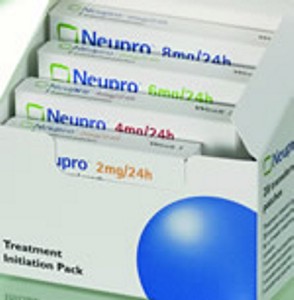 In the European Union and
most other regions, Neupro supply is sufficient," it continued. A
spokeswoman said it was not clear how long UCB would be out of stock in
the U.S.A.. As supplies will soon run out in the
U.S.A., UCB is strongly advising healthcare professionals and patients not
to abruptly stop their therapy, and that dosing should be gradually
reduced instead under medical supervision in order to avoid certain
complications.
For more information go to
Complete article.
The manufacturers have detailed which patches are still likely to work in
the meantime. For full details go to
Neupro.
In the European Union and
most other regions, Neupro supply is sufficient," it continued. A
spokeswoman said it was not clear how long UCB would be out of stock in
the U.S.A.. As supplies will soon run out in the
U.S.A., UCB is strongly advising healthcare professionals and patients not
to abruptly stop their therapy, and that dosing should be gradually
reduced instead under medical supervision in order to avoid certain
complications.
For more information go to
Complete article.
The manufacturers have detailed which patches are still likely to work in
the meantime. For full details go to
Neupro.
���������������������������������������������������������������������������������������������������������������������������������������������������
19th March 2008 - New research
ON WHICH SIDE OF THE BODY DO SYMPTOMS FIRST
APPEAR ?
Parkinsonism Related Disorders [2008] Mar 15; [Epub
ahead of print] (Yust-Katz S, Tesler D, Treves TA, Melamed E, Djaldetti R.)
Complete abstract
The prevalence and predictive factors of
which side of the body symptoms first appear in Parkinson's Disease has
hardly been investigated. The aim of this study was to assess whether
right handedness or left handedness determined the side of the body on
which symptoms first appeared by assessing over 300 people with idiopathic
Parkinson's disease. The dominant hand was recorded in each case, as were
right-left differences in tremor,
bradykinesia, and rigidity. Around 85% of patients were found to have
initiated symptoms on one side of the body
rather
than the other.
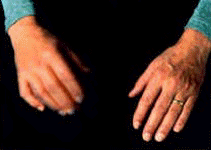 In right handed patients, the initial symptoms appeared on
the right side in 47% of patients, and on the left hand side in 38% of
patients, with 15% of patients having symptoms appearing on both sides
simultaneously. In left handed patients, the initial symptoms appeared on
the right side in 36% of patients, and on the left hand side in 52% of
patients, with 22% of patients having symptoms appearing on both sides
simultaneously. So there is a tendency for symptoms to begin on the side
that people use most, but only a tendency. This tendency is clearly
nowhere near as strong as had
been previously assumed.
In right handed patients, the initial symptoms appeared on
the right side in 47% of patients, and on the left hand side in 38% of
patients, with 15% of patients having symptoms appearing on both sides
simultaneously. In left handed patients, the initial symptoms appeared on
the right side in 36% of patients, and on the left hand side in 52% of
patients, with 22% of patients having symptoms appearing on both sides
simultaneously. So there is a tendency for symptoms to begin on the side
that people use most, but only a tendency. This tendency is clearly
nowhere near as strong as had
been previously assumed.
�
18th
March 2008 - News report
nuropro - for the detection of parkinson's disease
Power3 Medical Products have started a 300 patient
clinical validation study of its NuroPro diagnostic test for Parkinson�s
disease and Alzheimer�s disease. The study includes 100 Alzheimer�s
disease patients, 100 Parkinson�s disease patients and 100 controls. The
NuroPro test is based on Power3�s discovery of a group of 59 proteins in
the blood that demonstrate significant differences in blood serum
concentration for patients with Alzheimer�s Disease and Parkinson�s
Disease. In blood serum, these protein biomarker combinations, when
measured by blood serum proteomics, could lead to a far more effective
diagnosis and treatment of Parkinson�s Disease and Alzheimer's Disease.
Power3 expects to launch NuroPro at the end of 2008.
For more information go to
the
Complete article.�
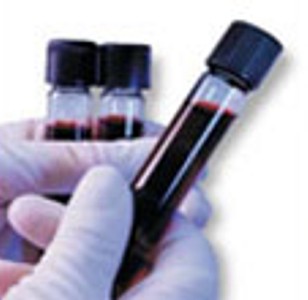 The
test is based on proteomic technology. A small sample of blood is drawn
from a vein. When a blood sample is collected and stored in a tube without
anticoagulant, it forms a clot after 30-60 minutes. The liquid portion
remaining is the blood serum. This serum sample is then frozen and
transported to the Power3 Medical CLIA certified laboratory, utilizing
pre-approved carriers/delivery service, where sample preparation and
analysis begins. Power3�s statistical model evaluates the quantitative
information of the protein biomarkers and automatically assigns a
probability score. This indicates to the physician the patient has a
Neurological disease or is disease-free.
For more information go to
NuroPro.
The
test is based on proteomic technology. A small sample of blood is drawn
from a vein. When a blood sample is collected and stored in a tube without
anticoagulant, it forms a clot after 30-60 minutes. The liquid portion
remaining is the blood serum. This serum sample is then frozen and
transported to the Power3 Medical CLIA certified laboratory, utilizing
pre-approved carriers/delivery service, where sample preparation and
analysis begins. Power3�s statistical model evaluates the quantitative
information of the protein biomarkers and automatically assigns a
probability score. This indicates to the physician the patient has a
Neurological disease or is disease-free.
For more information go to
NuroPro.
�
17th
March 2008 - New book
Proud Hands : Personal Victories with�Parkinson's����
 Publisher's
description :
Parkinson's disease affects many areas of a person's daily living, but
does not need to become the whole story of a person's life. That is why
Teva Neuroscience and the American Parkinson Disease Association (APDA)
have partnered to showcase the many inspirational things people living
with PD accomplish every day. "Proud Hands" is filled with personal photos
and stories from people across the nation sharing messages of hope and
encouragement. The coffee table book is a unique collection from people
with diverse backgrounds and ages. All proceeds from the sale of this book
go directly to the APDA to support research, people living with PD, their
caregivers and Parkinson's education.�
Click here for more details�
Publisher's
description :
Parkinson's disease affects many areas of a person's daily living, but
does not need to become the whole story of a person's life. That is why
Teva Neuroscience and the American Parkinson Disease Association (APDA)
have partnered to showcase the many inspirational things people living
with PD accomplish every day. "Proud Hands" is filled with personal photos
and stories from people across the nation sharing messages of hope and
encouragement. The coffee table book is a unique collection from people
with diverse backgrounds and ages. All proceeds from the sale of this book
go directly to the APDA to support research, people living with PD, their
caregivers and Parkinson's education.�
Click here for more details�
�
16th March 2008 - New research
HOW MANY PEOPLE ARE SUITABLE FOR DBS SURGERY
?
Parkinsonism Related Disorders [2007] 13 (8)
: 528-531 (Morgante L, Morgante F, Moro E, Epifanio A, Girlanda P,
Ragonese P, Antonini A, Barone P, Bonuccelli U, Contarino MF, Capus L,
Ceravolo MG, Marconi R, Ceravolo R, D'Amelio M, Savettieri G.)
Complete abstract
DBS is a surgical method of treating
Parkinson's Disease that
uses
electrodes implanted into the brain.
For more information go to
Deep Brain Stimulation.
Researchers estimated the percentage of people with
Parkinson's Disease that are suitable for subthalamic nucleus (STN) deep
brain stimulation (DBS). They used the Core Assessment Program for
Surgical Intervention Therapies in PD (CAPSIT-PD), which examines patients
in a "practically defined off
state" after overnight 12-hour drug withdrawal and again in the on state
after their usual morning dose of L-dopa.
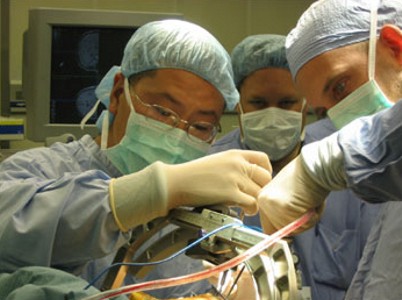 They found that out of 641
Parkinson's Disease patients only less than 2% fulfilled strict criteria
in order to be eligible. When the researchers applied more flexible
criteria, the percentage of eligibility increased. Yet the number of those
that were eligible was still less than 5%. Most patients - 60% of them -
were ineligible because they did not satisfy multiple questionnaire items.
Items related to disease severity were responsible for the largest number
of those people being excluded from eligibility.
They found that out of 641
Parkinson's Disease patients only less than 2% fulfilled strict criteria
in order to be eligible. When the researchers applied more flexible
criteria, the percentage of eligibility increased. Yet the number of those
that were eligible was still less than 5%. Most patients - 60% of them -
were ineligible because they did not satisfy multiple questionnaire items.
Items related to disease severity were responsible for the largest number
of those people being excluded from eligibility.
�
15th March 2008 - New research
THE SENSE OF SMELL IN PARKINSON'S
DISEASE
Arquivos de Neuropsiquiatria [2007] 65 (3A) :
647-652 (Quagliato LB, Viana MA, Quagliato EM, Simis S.)
Complete abstract
The purpose of the study was to characterize the olfactory dysfunction
(loss of of sense of smell) in Parkinson's
Disease patients using the University of Pennsylvania 12 smell
identification test (UPSIT). People with Parkinson's Disease were compared
to a group of people without Parkinson's Disease. The sense of smell in
Parkinson's Disease
was
shown to be clearly less.
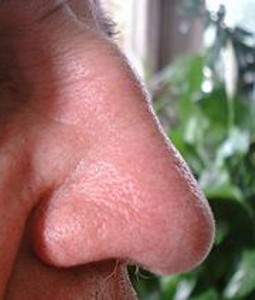 The mean UPSIT score was only 5.7 in those with Parkinson's Disease, but 9 in those that didn't have it. Patients who initially
had resting tremor, and those
that currently have tremor, rigidity and bradykinesia had a significantly
worse sense of smell. There was a negative relationship between patients'
age and Parkinson's Disease stage with the UPSIT scores. There was no
relationship between olfactory scores, and the age at the initial
Parkinson's Disease symptoms, and no relationship with the disease
duration. Among Parkinson's Disease patients, 80% had a loss of sense of
smell. So loss of sense of smell gives an indication of Parkinson's
Disease coming or existing. However, as 20% of people with Parkinson's
Disease do not lose their sense of smell at all, it is not a reliable
means of diagnosis.
The mean UPSIT score was only 5.7 in those with Parkinson's Disease, but 9 in those that didn't have it. Patients who initially
had resting tremor, and those
that currently have tremor, rigidity and bradykinesia had a significantly
worse sense of smell. There was a negative relationship between patients'
age and Parkinson's Disease stage with the UPSIT scores. There was no
relationship between olfactory scores, and the age at the initial
Parkinson's Disease symptoms, and no relationship with the disease
duration. Among Parkinson's Disease patients, 80% had a loss of sense of
smell. So loss of sense of smell gives an indication of Parkinson's
Disease coming or existing. However, as 20% of people with Parkinson's
Disease do not lose their sense of smell at all, it is not a reliable
means of diagnosis.
�
14th March 2008 - New research
COMPULSIONS IN PARKINSON'S
DISEASE
Neurologist [2008] 14 (2) : 89-99 (Stamey W,
Jankovic J.)
Complete abstract
This research examined the medical literature over a period 28 years
concerning impulse control disorders in Parkinson's Disease. Pathologic
gambling emerged as one of the most prominent impulse control disorders.
Hypersexuality, compulsive shopping and other manifestations of
obsessive-compulsive disorder may also dominate. Affected patients may
display a pattern of self-escalation of dopaminergic drug dosing, which
may lead to a state of drug dependency. Those patients most commonly
affected by impulse control disorders, such as pathologic gambling and
hypersexuality, are males who develop Parkinson's Disease at a younger
age, and those with a previous history of mood disorders, or alcohol
abuse, or obsessive-compulsive disorder. Dopaminergic drugs, particularly
certain dopamine agonists, play an important role in triggering these
symptoms. When
somebody takes dopamine agonists such as Ropinirole (Requip) and
Pramipexole (Mirapex), they disproportionately stimulate the D3 dopamine
receptor, far more than L-dopa does. This causes arousal in the limbic
system, which is where the D3 dopamine receptor is primarily located.
Given that the limbic system is connected with the pleasure centre and
with sexual arousal,� the use of certain dopamine agonists can
especially
lead to unwanted compulsions or sexual arousal.
 �
�
 �
�
 �
�


 �
�
�
13th March 2008 - New research
NEW TEST FOR DETECTING PARKINSON'S
DISEASE
Brain [2008] 131 (2) : 389-396 (M.Bogdanov,
W.R.Matson, L.Wang, T.Matson, R.Saunders-Pulman, S.S.Bressman, M.F.Beal)
Complete
study
Due to faulty diagnosis, a huge number of
people diagnosed with Parkinson's Disease do not actually have it. This is
because diagnosis is usually based solely on a review of symptoms.
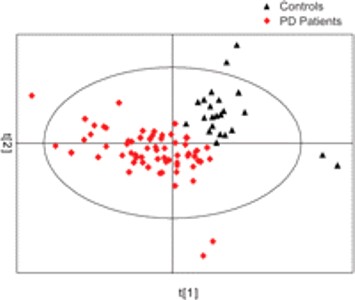 Clinical trials are also hindered because of
difficulties
in the assessment of symptoms. New research has shown a test that profiles molecular biomarkers in
blood that could become the first accurate diagnostic test for Parkinson's
disease. It relies on changes in dozens of
small molecules in serum. These "metabolomic" alterations form a unique
pattern in people with Parkinson's disease.� No one molecule was
definitive, but a pattern of about 160 compounds emerged that was highly
specific to Parkinson's patients. These included low uric acid, and
increased glutathione. More work needs to be done to validate the
findings. A test that would be used routinely by doctors is still a few
years away.�
For more information go to
the
Complete article.
Clinical trials are also hindered because of
difficulties
in the assessment of symptoms. New research has shown a test that profiles molecular biomarkers in
blood that could become the first accurate diagnostic test for Parkinson's
disease. It relies on changes in dozens of
small molecules in serum. These "metabolomic" alterations form a unique
pattern in people with Parkinson's disease.� No one molecule was
definitive, but a pattern of about 160 compounds emerged that was highly
specific to Parkinson's patients. These included low uric acid, and
increased glutathione. More work needs to be done to validate the
findings. A test that would be used routinely by doctors is still a few
years away.�
For more information go to
the
Complete article.
�
12th March 2008 - New research
DIETARY URATE REDUCES RISK OF PARKINSON'S
DISEASE
American Journal of Epidemiology [2008] Mar
7; [Epub ahead of print] (Gao X, Chen H, Choi HK, Curhan G, Schwarzschild
MA, Ascherio A.)
Complete abstract
Urate is a substance that is consumed in the diet, especially in certain
fish (herring, mackerel, anchovies, sardines), and parts of animals
(liver, beef kidneys, meat extracts). For more information go to
Urate.
 The authors
examined
whether
a diet that increases plasma urate levels is also related to a reduced
risk of Parkinson's disease. The study population comprised nearly 50,000 men. After
14 years of follow-up, the authors documented 248 cases of Parkinson's
Disease. A higher dietary intake of urate was associated with a lower risk of Parkinson's
Disease. This association remained strong and significant after adjustment
for various factors. These data support urate as a potentially protective
factor in Parkinson's Disease, and suggest that dietary changes that
increase plasma urate levels may contribute to lower risk of Parkinson's
Disease. The researchers do not explain why this association exists.
The authors
examined
whether
a diet that increases plasma urate levels is also related to a reduced
risk of Parkinson's disease. The study population comprised nearly 50,000 men. After
14 years of follow-up, the authors documented 248 cases of Parkinson's
Disease. A higher dietary intake of urate was associated with a lower risk of Parkinson's
Disease. This association remained strong and significant after adjustment
for various factors. These data support urate as a potentially protective
factor in Parkinson's Disease, and suggest that dietary changes that
increase plasma urate levels may contribute to lower risk of Parkinson's
Disease. The researchers do not explain why this association exists.
�
11th March 2008 - History
PARKINSON'S
DISEASE IN ANCIENT CHINA
In China, descriptions and treatments of
Parkinson's Disease date back nearly 2500 years. The Yellow Emperor's
Internal Classic was titled with the name of the Yellow Emperor around
425-221 BC. The Yellow Emperor's Internal Classic Plain Questions is a 24-volume
section of the Yellow Emperor's Internal Classic that collected clinical
experiences
of Chinese practitioners up to that period.
 Volume 22 describes symptoms
of tremor and stiffness. Volume 5 describes symptoms compatible with
limitation of movement, postural disturbances, stiffness, and tremor as
follows : A person appears with crouching of the head and with staring
eyes, bending the trunk with shoulders drooped, with difficulty turning
and rocking the low back, inability of the knees to flex and extend, with
the back bowed, failure to stand for long periods, and tremor while
walking.
Volume 22 describes symptoms
of tremor and stiffness. Volume 5 describes symptoms compatible with
limitation of movement, postural disturbances, stiffness, and tremor as
follows : A person appears with crouching of the head and with staring
eyes, bending the trunk with shoulders drooped, with difficulty turning
and rocking the low back, inability of the knees to flex and extend, with
the back bowed, failure to stand for long periods, and tremor while
walking.
������������������ �������������������������������������������������������������������������������������������������������������� Written during the 6th Dynasty (AD 220-228), the book "Hua's Zhong Zang
Classic" (chapter 37) contains a section titled "Thesis on Muscular
Palsy". The author vividly describes festinating gait as he "walks fast
and fast just as if running involuntarily, and unable to slow down."
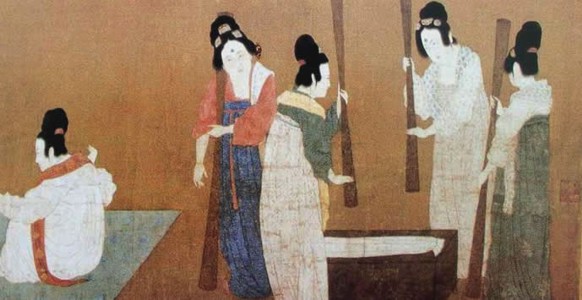 During
the Tang dynasty, Sun Simiao (AD 581-682) wrote a book entitled "Essential
Prescriptions Worth a Thousand Gold". Volume 8 recommends a
prescription of "Jinya wine" for those who for several years feel heavy,
just as if being pulled by a string when raising an arm, a foot, or the
body, to those who find it difficult to turn around, to walk without
dragging the legs; and to those who cannot avoid getting into a running
pace.
During
the Tang dynasty, Sun Simiao (AD 581-682) wrote a book entitled "Essential
Prescriptions Worth a Thousand Gold". Volume 8 recommends a
prescription of "Jinya wine" for those who for several years feel heavy,
just as if being pulled by a string when raising an arm, a foot, or the
body, to those who find it difficult to turn around, to walk without
dragging the legs; and to those who cannot avoid getting into a running
pace.
�
10th March 2008 - History
PARKINSON'S DISEASE IN MEDIEVAL CHINA
During the Jin Dynasty, Zhang Zihe (1151-1231)
reported a case in "Ru Men Shi Qin" in which a 59 year old man had tremor in his
jaw, hands and feet for 3 years. He failed to hold things and to eat by himself.
His mouth stayed open, with a blank stare. He was depressed and attempted
suicide, but he was unable to hang himself because of his tremulous hands. Zhang
advocated diaphoresis using Fangfeng Tongsheng San, then inducing vomiting,
expelling wind, and promoting circulation of qi through herbs, and nourishing by
food. After treatment for several months, his condition improved, his feet were
not as heavy as before, the tremor was less, and he was able to walk and to hold
a comb, towel, spoon and chopsticks.
��������������������������������������������������������������������������������������������������������������������������������������������������������������������������
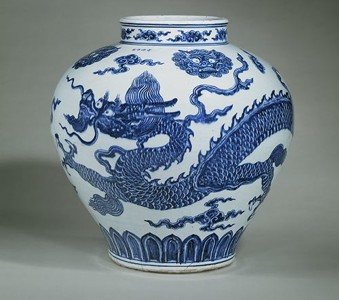 During
the Ming Dynasty, Sun Yikui (1522-1619) first classified a condition
dominated by tremor in his book Chi Shui Xuan Zhu. He wrote of shaking
from the elbows down, of the head, foot, and hand. He wrote that "the
tremor is rare in the young and occurred after middle age, particularly in
the elderly." He emphasized that the tremor syndrome is very difficult to
treat, except for the case of Mr Ma from the Xin stockade village with
good response to medication ... as reported by Zhang Zihe. Mr Ma's
manifestations included symptoms of tremor, stiffness, and immobility.
Therefore, it is likely that that he referred mainly to Parkinson's
Disease when he described the tremor syndrome in the elderly.
During
the Ming Dynasty, Sun Yikui (1522-1619) first classified a condition
dominated by tremor in his book Chi Shui Xuan Zhu. He wrote of shaking
from the elbows down, of the head, foot, and hand. He wrote that "the
tremor is rare in the young and occurred after middle age, particularly in
the elderly." He emphasized that the tremor syndrome is very difficult to
treat, except for the case of Mr Ma from the Xin stockade village with
good response to medication ... as reported by Zhang Zihe. Mr Ma's
manifestations included symptoms of tremor, stiffness, and immobility.
Therefore, it is likely that that he referred mainly to Parkinson's
Disease when he described the tremor syndrome in the elderly.
 During
the Ming Dynasty, Wang Kentang (1549-1613) compiled a 44-volume book
entitled "Standards for Diagnosis and
Treatment". He advocated the use of an antitremor pill, which was� a
mixture of gastrodia tuber and
scorpion (for calming the liver-wind and alleviating the spasm);
large-leaf gentian, olematis root, Ledebouriella root, schizonepeta herb,
and wild ginger herb (for expelling pathogenic wind and removing
dampness); prepared and dried rehmannia, Chinese angelica root, peony
root, atractylodes rhizome, and astragalus root (to replenish "qi" and to
nourish the blood); and chuanxiong (to promote blood circulation and the
flow of qi). This antitremor pill was used not only for tremor, but also
for stiffness (ie, relieving spasm and removing dampness). These medicinal
components are still used for Parkinson's Disease in China.
During
the Ming Dynasty, Wang Kentang (1549-1613) compiled a 44-volume book
entitled "Standards for Diagnosis and
Treatment". He advocated the use of an antitremor pill, which was� a
mixture of gastrodia tuber and
scorpion (for calming the liver-wind and alleviating the spasm);
large-leaf gentian, olematis root, Ledebouriella root, schizonepeta herb,
and wild ginger herb (for expelling pathogenic wind and removing
dampness); prepared and dried rehmannia, Chinese angelica root, peony
root, atractylodes rhizome, and astragalus root (to replenish "qi" and to
nourish the blood); and chuanxiong (to promote blood circulation and the
flow of qi). This antitremor pill was used not only for tremor, but also
for stiffness (ie, relieving spasm and removing dampness). These medicinal
components are still used for Parkinson's Disease in China.
Modern pharmacological studies of Zhang's
Fangfeng Tongsheng San have found mechanisms of action that could explain
its effects on movement disorders. These include herbs containing
scopolamine (Ledebouriella root), anticholinergic compounds including
peony root and licorice root, and products with antioxidant and
freeradical scavenging effects. Jinya wine and the antitremor pill contain
the same herbs as Zhang's Fangfeng Tongsheng San (ie, Chinese angelica
root, peony root) and gastrodia as a main element. Gastrodia is
particularly interesting because it contains gastrodin, which has been
shown to increase dopamine levels in guinea pigs and to inhibit monoamine
oxidase type B activity in aging mice. Furthermore, gastrodia appears to
promote differentiation of mesenchymal stem cells of rats into neuron-like
cells and possesses potential neuroprotective effects.
�
9th March 2008 - New research
THE BLOOD BRAIN BARRIER AND PARKINSON'S
DISEASE
Parkinsonism Related Disorders [2008] Mar 4;
[Epub ahead of print] (Bartels AL, van Berckel BN, Lubberink M, Luurtsema
G, Lammertsma AA, Leenders KL.)
Complete abstract
The blood brain barrier prevents unwanted chemicals passing from the blood
in to the brain. It has been claimed that Parkinson's Disease was due to a
defective blood brain barrier. The blood brain barrier tends to decline in
function as people age. So it was suggested that toxic substances known to
be able to cause Parkinson's Disease were
able
to cause symptoms due to being more readily able to pass the blood brain
barrier.
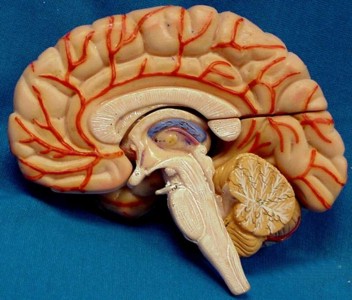 In this study, this theory was assessed by comparing the function
of the blood brain barrier in people with Parkinson's Disease, and in
people that did not have Parkinson's Disease. A range of methods were used
to assess the level of blood brain barrier function. Although there was
greater variability in people that had Parkinson's Disease, the blood
brain barrier in people with Parkinson's Disease was not found to be
decreased. Therefore, people with Parkinson's Disease are no more prone to
the effect of toxic substances than anyone else.
In this study, this theory was assessed by comparing the function
of the blood brain barrier in people with Parkinson's Disease, and in
people that did not have Parkinson's Disease. A range of methods were used
to assess the level of blood brain barrier function. Although there was
greater variability in people that had Parkinson's Disease, the blood
brain barrier in people with Parkinson's Disease was not found to be
decreased. Therefore, people with Parkinson's Disease are no more prone to
the effect of toxic substances than anyone else.
�
7th March 2008 - New research
THE EFFECT OF DUODOPA ON Parkinson's disease
Neurodegenerative Diseases [2008] 5 (3-4) :
244-246 (Antonini A, Mancini F, Canesi M, Zangaglia R, Isaias IU, Manfredi
L, Pacchetti C, Zibetti M, Natuzzi F, Lopiano L, Nappi G, Pezzoli G.)
Complete abstract
L-dopa in tablet form causes considerable fluctuations in L-dopa levels in
the body. Duodopa is an infusion of L-dopa and carbidopa that is delivered
directly in to the intestines. This ensures a continuous and even flow of
L-dopa that can be adjusted according to the patient's individual needs.
Treatment involves an operation to make a small opening in the abdomen so
that a tube can be passed into the bowel. The tube is then connected to a
portable pump
that
is worn during the day and which feeds L-dopa/carbidopa directly into the
bowel. For more information go
to
Duodopa.
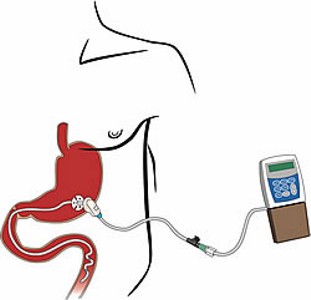 Researchers assessed the effectiveness of
duodenal levodopa infusion on quality of life as well as motor features in
patients with advanced Parkinson's Disease. Patients were assessed for up
to 2 years, who were on continuous duodenal levodopa / carbidopa infusion
through percutaneous endoscopic gastrostomy. They found a significant
reduction in "off" period duration, as well as dyskinesia severity. There
was significant improvement in the 39-item Parkinson's Disease Quality of
Life Questionnaire as well as in the Unified Parkinson's Disease Rating
Scale.� Only a few patients withdrew due to adverse events.
Researchers assessed the effectiveness of
duodenal levodopa infusion on quality of life as well as motor features in
patients with advanced Parkinson's Disease. Patients were assessed for up
to 2 years, who were on continuous duodenal levodopa / carbidopa infusion
through percutaneous endoscopic gastrostomy. They found a significant
reduction in "off" period duration, as well as dyskinesia severity. There
was significant improvement in the 39-item Parkinson's Disease Quality of
Life Questionnaire as well as in the Unified Parkinson's Disease Rating
Scale.� Only a few patients withdrew due to adverse events.
�
6th March 2008 - New research
Parkinson's disease drugs and the risk of gambling
European Journal of Neurology [2008] Feb
26; [Epub ahead of print] (Imamura A, Geda YE, Slowinski J, Wszolek ZK, Brown
LA, Uitti RJ.)
Complete abstract
Recent case-series studies indicated that
drugs used to treat Parkinson's disease, especially Pramipexole, which is
marketed as Mirapex, is associated with gambling.� Patients with
Parkinson's Disease without any history of gambling, but who has started
gambling, were matched with Parkinson's Disease patients who didn't gamble
at all.
 Combined
therapy with Pramipexole and L-dopa did not increase the risk of gambling
when compared to the use of Pramipexole on its own. However, the use of
Pramipexole was significantly associated with increased risk of gambling.
Patients with Parkinson's Disease who has started gambling were more
likely to have been taking Pramipexole than any other drugs. L-dopa and
dopamine agonists all have a dopaminergic effect. However, no reason is
given why Pramipexole has any greater effect on gambling than any other
dopamine agonists, or why dopamine agonists make people more inclined to
gamble than L-dopa. Previous research showed that gambling is one of
several compulsions caused by taking dopamine agonists.�
Combined
therapy with Pramipexole and L-dopa did not increase the risk of gambling
when compared to the use of Pramipexole on its own. However, the use of
Pramipexole was significantly associated with increased risk of gambling.
Patients with Parkinson's Disease who has started gambling were more
likely to have been taking Pramipexole than any other drugs. L-dopa and
dopamine agonists all have a dopaminergic effect. However, no reason is
given why Pramipexole has any greater effect on gambling than any other
dopamine agonists, or why dopamine agonists make people more inclined to
gamble than L-dopa. Previous research showed that gambling is one of
several compulsions caused by taking dopamine agonists.�
�
5th March 2008 - New book
Parkinson's Disease
in THE OLDER PATIENT
Jeremy Playfer and John Hindle (Editors)������
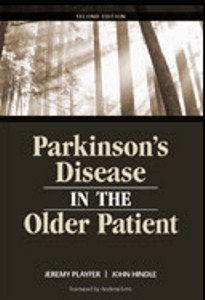 Publisher's
description :
Parkinson�s Disease in the Older Patient has been fully revised, updated
and expanded to include new treatments and entirely new chapters. Detailed
information on the aetiology and pathogenesis of the condition, drug and
surgical treatments, sleep disturbances, quality of life, and carers is
now included, along with the more prevalent older patient issues such as
neuropsychiatric disturbances, speech and swallowing problems, balance and
falls, and autonomic disturbances. The updates also include new advice on
the management and services in primary care, linked to the recent NICE
guidelines. This new edition is recommended for all those involved in the
treatment of Parkinson's Disease patients.
Click here for more details�
Publisher's
description :
Parkinson�s Disease in the Older Patient has been fully revised, updated
and expanded to include new treatments and entirely new chapters. Detailed
information on the aetiology and pathogenesis of the condition, drug and
surgical treatments, sleep disturbances, quality of life, and carers is
now included, along with the more prevalent older patient issues such as
neuropsychiatric disturbances, speech and swallowing problems, balance and
falls, and autonomic disturbances. The updates also include new advice on
the management and services in primary care, linked to the recent NICE
guidelines. This new edition is recommended for all those involved in the
treatment of Parkinson's Disease patients.
Click here for more details�
�
4th March 2008 - News report
unfertilized STEM CELLS TO BE USED IN parkinson's disease
International Stem Cell Corporation announced
that its human parthenogenetic stem cell lines will be used in Germany in
studies aimed at creating specific cell types to treat human neural
diseases such as Parkinson's disease. ISCO's human parthenogenetic stem
cells are created from unfertilized human eggs, yet they share with
conventional human embryonic stem cells the ability to differentiate into
all tissue types. They are also the first step in solving one of the major
obstacles to stem cell therapy, which is the rejection of implanted cells
by the patient's
own
immune system.
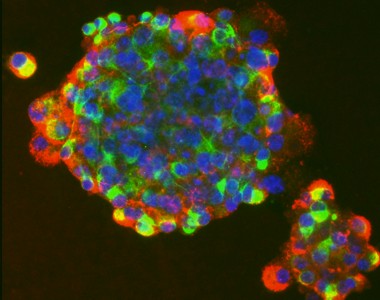 So cells derived from this line will not be immune rejected
after transplantation into millions of individuals of differing sexes,
ages and racial groups. They aim to make their cell lines and intellectual
property easily available, and thereby become a supplier of stem cells for
use by patients across the world. Their intention is to distribute their
human parthenogenetic stem cell lines to as many qualified researchers as
possible.
For more information go to
the
Complete article.
Despite stem cell surgery already taking
place around the world, nobody has been rid of Parkinson's Disease after
having it.
So cells derived from this line will not be immune rejected
after transplantation into millions of individuals of differing sexes,
ages and racial groups. They aim to make their cell lines and intellectual
property easily available, and thereby become a supplier of stem cells for
use by patients across the world. Their intention is to distribute their
human parthenogenetic stem cell lines to as many qualified researchers as
possible.
For more information go to
the
Complete article.
Despite stem cell surgery already taking
place around the world, nobody has been rid of Parkinson's Disease after
having it.
�
3rd March 2008 - New research
istradefylline - a non-dopamine approach to parkinson's disease
Annals of Neurology [2008] Feb 27; [Epub
ahead of print] (Lewitt PA, Guttman M, Tetrud JW, Tuite PJ, Mori A,
Chaikin PC, Sussman NM)
Complete abstract
Istradefylline (KW-6002), in dosages of 40mg per day was studied in people
with Parkinson's Disease being treated for Parkinson's Disease, who were
experiencing prominent wearing-off motor fluctuations. Istradefylline is a
fairly new type of drug for use in Parkinson's Disease that is similar in
its action to Caffeine. Istradefylline acts independently from the formation of dopamine.
It is a selective adenosine A(2A) receptor antagonist. This means that
Istradefylline reduces the effect of adenosine.
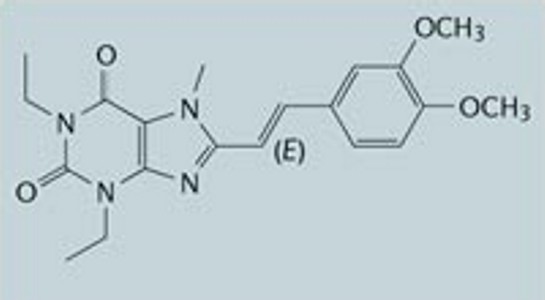 As adenosine has a largely
inhibitory effect in the central nervous
system, Istradefylline reduces that
inhibition. This reduction in adenosine's inhibitory effects indirectly
enables an� increased activity of dopamine. The reduction in "off" time found after using
Istradefylline was nearly two hours. Istradefylline was also found to be
relatively safe, because the adverse effects when using Istradefylline
were generally mild. There was also no dyskinesia as a result of taking
it. The FDA have still not approved its use because of several concerns.
For more information go to
the
Complete article.
As adenosine has a largely
inhibitory effect in the central nervous
system, Istradefylline reduces that
inhibition. This reduction in adenosine's inhibitory effects indirectly
enables an� increased activity of dopamine. The reduction in "off" time found after using
Istradefylline was nearly two hours. Istradefylline was also found to be
relatively safe, because the adverse effects when using Istradefylline
were generally mild. There was also no dyskinesia as a result of taking
it. The FDA have still not approved its use because of several concerns.
For more information go to
the
Complete article.
�
2nd March 2008 - New research
the
long term effects of parkinson's disease
Movement Disorders [2008] Feb 28; [Epub ahead
of print] (Hely MA, Reid WG, Adena MA, Halliday GM, Morris JG.)
Complete abstract
After 20 years follow-up of newly diagnosed patients with Parkinson's
disease, 74% of them had died. Drug induced dyskinesia and end of dose
failure were experienced by most patients, but the main problems related
to the features
of
the disease that were not L-dopa responsive.
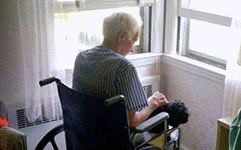 Dementia is present in 83% of
20-year survivors, and is highly related to age. Only one of the survivors
lived independently. Nearly half of them were in nursing homes. Excessive
daytime sleepiness was noted in 70%. Falls had occurred in 87%, freezing
had occurred in 81%, fractures in 35%, symptomatic postural hypotension in
48%, urinary incontinence in 71%, moderate dysarthria in 81%, choking in
48%, and hallucinations in 74%.�
Dementia is present in 83% of
20-year survivors, and is highly related to age. Only one of the survivors
lived independently. Nearly half of them were in nursing homes. Excessive
daytime sleepiness was noted in 70%. Falls had occurred in 87%, freezing
had occurred in 81%, fractures in 35%, symptomatic postural hypotension in
48%, urinary incontinence in 71%, moderate dysarthria in 81%, choking in
48%, and hallucinations in 74%.�
�
1st March 2008 - History
shakespeare and parkinson's disease
 William Shakespeare (1564-1616)
shows in his plays an astonishing knowledge of contemporary medicine. Over 700
quotations are said to be found in his work dealing with medical matters.
Extracts from his plays, show that William Shakespeare was well aware of the
clinical picture of elderly people with motor difficulties and tremor. In
"Richard II (Act II, Scene III), the aging Duke of York describes a loss of arm
movement when he says : "How quickly should
this
arm of mine, now prisoner to the palsy". In Troilus and Cressida (Act I, Scene
II), Ulysses talks in his monologue about Achilles, whom he considers old and of
no use.
William Shakespeare (1564-1616)
shows in his plays an astonishing knowledge of contemporary medicine. Over 700
quotations are said to be found in his work dealing with medical matters.
Extracts from his plays, show that William Shakespeare was well aware of the
clinical picture of elderly people with motor difficulties and tremor. In
"Richard II (Act II, Scene III), the aging Duke of York describes a loss of arm
movement when he says : "How quickly should
this
arm of mine, now prisoner to the palsy". In Troilus and Cressida (Act I, Scene
II), Ulysses talks in his monologue about Achilles, whom he considers old and of
no use.
He clearly connects "Palsy" with the shaking of tremor when he says :
"And with a palsy fumbling on his gorget, Shake in and out the rivet." In "King
Henry VI, part 2" (Act IV, scene VII) there is another reference to tremor. When
Dick asks "Why dost thou quiver [shake], man ?", the response from Lord Say is
"It is the palsy, and not fear, provokes me." It appears that Lord Say also has
head tremor, when Jack Cade says : "I'll see if his head will stand steadier on
a pole". Shakespeare, and probably his audience, were very familiar with the
"palsy" and its symptoms. This term most likely was then used for a clinical
picture we today would recognize as Parkinson's Disease.
.gif)
.gif)
 At
the age of 49, Dr. Thomas Graboys had reached the pinnacle of his career
and was leading a charmed life. A nationally renowned Boston cardiologist
popular for his attention to the hearts and souls of his patients. He had
a beautiful wife, two wonderful daughters, and a thriving private
practice. Today, Graboys is battling a particularly aggressive form of
Parkinson�s disease and progressive dementia, and can no longer see
patients. Despite the physical, mental and emotional toll he battles
daily, Graboys continues by telling his story so that others may find
comfort, inspiration, or validation in their own struggles. His is not a
sugar-coated story with a silver lining; brutally honest and direct, this
is an unflinching memoir of a devastating illness.
�
At
the age of 49, Dr. Thomas Graboys had reached the pinnacle of his career
and was leading a charmed life. A nationally renowned Boston cardiologist
popular for his attention to the hearts and souls of his patients. He had
a beautiful wife, two wonderful daughters, and a thriving private
practice. Today, Graboys is battling a particularly aggressive form of
Parkinson�s disease and progressive dementia, and can no longer see
patients. Despite the physical, mental and emotional toll he battles
daily, Graboys continues by telling his story so that others may find
comfort, inspiration, or validation in their own struggles. His is not a
sugar-coated story with a silver lining; brutally honest and direct, this
is an unflinching memoir of a devastating illness.
� Procedure related events (% of STN / % of GPi)
:
Mental status / behaviour (mostly
confusion) 18% / 9%, Infection 2% / 3%, ICH-symptomatic 2% / 4%,
Misplaced electrode
2% / 2%, Speech disturbance 2% / 4%, Infarction 1% / 2%.
Procedure related events (% of STN / % of GPi)
:
Mental status / behaviour (mostly
confusion) 18% / 9%, Infection 2% / 3%, ICH-symptomatic 2% / 4%,
Misplaced electrode
2% / 2%, Speech disturbance 2% / 4%, Infarction 1% / 2%. In the �Heidelberg Boxing Study� high-resolution MRI
data were used to search for tiny
changes in the brains of amateur boxers and a comparison group of
non-boxers. These changes were suggested as the most likely precursors for
later severe brain damage in Parkinson�s Disease. Microhemorrhages were
found in some of the boxers, while in the comparison group of non-boxers
there were no such changes. However the difference between the two groups
was found to be statistically insignificant. So there was no evidence that
boxing causes Parkinson's Disease.�����
In the �Heidelberg Boxing Study� high-resolution MRI
data were used to search for tiny
changes in the brains of amateur boxers and a comparison group of
non-boxers. These changes were suggested as the most likely precursors for
later severe brain damage in Parkinson�s Disease. Microhemorrhages were
found in some of the boxers, while in the comparison group of non-boxers
there were no such changes. However the difference between the two groups
was found to be statistically insignificant. So there was no evidence that
boxing causes Parkinson's Disease.�����  The
strongest
associations
were between people with Parkinson's who had been exposed to herbicide and
insecticide chemicals such as organochlorides and organophosphates. No
links were found between Parkinson's disease and drinking well-water or
living or working on a farm. People tended to be those who used a lot of
pesticides in their homes and in their hobbies. There were not many people
who routinely used pesticides for their occupation. There are several
pesticides known to cause Parkinson's Disease, as well as other toxic
causes. For more information go to
The
strongest
associations
were between people with Parkinson's who had been exposed to herbicide and
insecticide chemicals such as organochlorides and organophosphates. No
links were found between Parkinson's disease and drinking well-water or
living or working on a farm. People tended to be those who used a lot of
pesticides in their homes and in their hobbies. There were not many people
who routinely used pesticides for their occupation. There are several
pesticides known to cause Parkinson's Disease, as well as other toxic
causes. For more information go to
 People with Parkinson's
Disease who produced excessive saliva during the day were evaluated. Of
those in which
Silent laryngeal
penetration or silent aspiration (SLP/SA) was observed, most developed
respiratory infection. Some of them died of it.
The authors claim that the results suggest
that patients with Parkinson's disease with diurnal sialorrhea (excessive
saliva during the day) and SLP/SA have an increased risk of respiratory
infections, which is the main cause of death in Parkinson's Disease
patients. The data support a greater emphasis on preventive measures
regarding these issues in order to improve survival in people with
Parkinson's disease.
People with Parkinson's
Disease who produced excessive saliva during the day were evaluated. Of
those in which
Silent laryngeal
penetration or silent aspiration (SLP/SA) was observed, most developed
respiratory infection. Some of them died of it.
The authors claim that the results suggest
that patients with Parkinson's disease with diurnal sialorrhea (excessive
saliva during the day) and SLP/SA have an increased risk of respiratory
infections, which is the main cause of death in Parkinson's Disease
patients. The data support a greater emphasis on preventive measures
regarding these issues in order to improve survival in people with
Parkinson's disease. It focused on the clinical
differences between patients with and
without
Restless Legs Syndrome (RLS). They used specific scales : Unified
Parkinson's Disease Rating Scale (UPDRS I-IV), quality of life
(Parkinson's Disease Questionnaire, PDQ 39), sleep symptoms (Parkinson's
Disease Sleep Scale, PDSS), and diurnal hypersomnia (Epworth Sleepiness
Scale). Over 20% of people with Parkinson's Disease were found to also
suffer from Restless Legs Syndrome (RLS). RLS was found to be far more
common in women. More than two thirds of those with RLS were women. Those
with RLS suffered more from lack of sleep, and body discomfort. Although
RLS is frequent in patients with Parkinson's Disease, it does not appear
to affect the quality of life by any other means.
It focused on the clinical
differences between patients with and
without
Restless Legs Syndrome (RLS). They used specific scales : Unified
Parkinson's Disease Rating Scale (UPDRS I-IV), quality of life
(Parkinson's Disease Questionnaire, PDQ 39), sleep symptoms (Parkinson's
Disease Sleep Scale, PDSS), and diurnal hypersomnia (Epworth Sleepiness
Scale). Over 20% of people with Parkinson's Disease were found to also
suffer from Restless Legs Syndrome (RLS). RLS was found to be far more
common in women. More than two thirds of those with RLS were women. Those
with RLS suffered more from lack of sleep, and body discomfort. Although
RLS is frequent in patients with Parkinson's Disease, it does not appear
to affect the quality of life by any other means. Despite what has been widely reported,
the mice did not actually have Parkinson's Disease. They were not rid of
all artificially induced Parkinson's Disease symptoms either. The
researchers did not check for persistent effects, as the mice were
assessed for less than three months. Stem cell surgery operations are
already being carried out almost every day involving Parkinson's Disease.
Yet they have not rid anyone of Parkinson's Disease. Stem cell surgery is
based on the assumption that people with Parkinson's Disease are suffering
a massive loss of dopamine producing cells. Despite this being widely
claimed, no research has ever shown this to be true.
Despite what has been widely reported,
the mice did not actually have Parkinson's Disease. They were not rid of
all artificially induced Parkinson's Disease symptoms either. The
researchers did not check for persistent effects, as the mice were
assessed for less than three months. Stem cell surgery operations are
already being carried out almost every day involving Parkinson's Disease.
Yet they have not rid anyone of Parkinson's Disease. Stem cell surgery is
based on the assumption that people with Parkinson's Disease are suffering
a massive loss of dopamine producing cells. Despite this being widely
claimed, no research has ever shown this to be true.  It has been claimed that
alpha-synuclein
is involved in the cause of
Parkinson's disease. Parkinson's Disease
normally occurs when the formation of dopamine is insufficient. Previous studies have shown that
alpha-synuclein is involved in the regulation of dopamine, possibly by
reducing the formation of tyrosine hydroxylase. Tyrosine hydroxylase is
responsible for the formation of L-dopa.� This study found that
alpha-synuclein did not interfere with the formation of tyrosine
hydroxylase. However, alpha-synuclein was still found to reduce the
activity of tyrosine hydroxylase, and by that means, reduce the formation
of L-dopa and dopamine. The reduced dopamine formation this leads to can
enable alpha-synuclein to exacerbate the symptoms of Parkinson's Disease.
It has been claimed that
alpha-synuclein
is involved in the cause of
Parkinson's disease. Parkinson's Disease
normally occurs when the formation of dopamine is insufficient. Previous studies have shown that
alpha-synuclein is involved in the regulation of dopamine, possibly by
reducing the formation of tyrosine hydroxylase. Tyrosine hydroxylase is
responsible for the formation of L-dopa.� This study found that
alpha-synuclein did not interfere with the formation of tyrosine
hydroxylase. However, alpha-synuclein was still found to reduce the
activity of tyrosine hydroxylase, and by that means, reduce the formation
of L-dopa and dopamine. The reduced dopamine formation this leads to can
enable alpha-synuclein to exacerbate the symptoms of Parkinson's Disease.
 All of them had
relatives with Parkinson's
Disease.
Eight of these patients had at least one parent with Parkinson�s, one had both parents affected,
and three had
one sibling affected. When available, relatives with Parkinson�s were also sampled. Researchers
found they carried the same mutation, which led to single amino acid
substitutions in the protein encoded by the GIGYF2 gene. None of the
mutations were observed in those that did not have Parkinson's Disease.
For more information go to
the
All of them had
relatives with Parkinson's
Disease.
Eight of these patients had at least one parent with Parkinson�s, one had both parents affected,
and three had
one sibling affected. When available, relatives with Parkinson�s were also sampled. Researchers
found they carried the same mutation, which led to single amino acid
substitutions in the protein encoded by the GIGYF2 gene. None of the
mutations were observed in those that did not have Parkinson's Disease.
For more information go to
the
 In the European Union and
most other regions, Neupro supply is sufficient," it continued. A
spokeswoman said it was not clear how long UCB would be out of stock in
the U.S.A.. A
In the European Union and
most other regions, Neupro supply is sufficient," it continued. A
spokeswoman said it was not clear how long UCB would be out of stock in
the U.S.A.. A In right handed patients, the initial symptoms appeared on
the right side in 47% of patients, and on the left hand side in 38% of
patients, with 15% of patients having symptoms appearing on both sides
simultaneously. In left handed patients, the initial symptoms appeared on
the right side in 36% of patients, and on the left hand side in 52% of
patients, with 22% of patients having symptoms appearing on both sides
simultaneously. So there is a tendency for symptoms to begin on the side
that people use most, but only a tendency. This tendency is clearly
nowhere near as strong as had
been previously assumed.
In right handed patients, the initial symptoms appeared on
the right side in 47% of patients, and on the left hand side in 38% of
patients, with 15% of patients having symptoms appearing on both sides
simultaneously. In left handed patients, the initial symptoms appeared on
the right side in 36% of patients, and on the left hand side in 52% of
patients, with 22% of patients having symptoms appearing on both sides
simultaneously. So there is a tendency for symptoms to begin on the side
that people use most, but only a tendency. This tendency is clearly
nowhere near as strong as had
been previously assumed.  The
test is based on proteomic technology. A small sample of blood is drawn
from a vein. When a blood sample is collected and stored in a tube without
anticoagulant, it forms a clot after 30-60 minutes. The liquid portion
remaining is the blood serum. This serum sample is then frozen and
transported to the Power3 Medical CLIA certified laboratory, utilizing
pre-approved carriers/delivery service, where sample preparation and
analysis begins. Power3�s statistical model evaluates the quantitative
information of the protein biomarkers and automatically assigns a
probability score. This indicates to the physician the patient has a
Neurological disease or is disease-free.
For more information go to
The
test is based on proteomic technology. A small sample of blood is drawn
from a vein. When a blood sample is collected and stored in a tube without
anticoagulant, it forms a clot after 30-60 minutes. The liquid portion
remaining is the blood serum. This serum sample is then frozen and
transported to the Power3 Medical CLIA certified laboratory, utilizing
pre-approved carriers/delivery service, where sample preparation and
analysis begins. Power3�s statistical model evaluates the quantitative
information of the protein biomarkers and automatically assigns a
probability score. This indicates to the physician the patient has a
Neurological disease or is disease-free.
For more information go to
 Publisher's
description :
Parkinson's disease affects many areas of a person's daily living, but
does not need to become the whole story of a person's life. That is why
Teva Neuroscience and the American Parkinson Disease Association (APDA)
have partnered to showcase the many inspirational things people living
with PD accomplish every day. "Proud Hands" is filled with personal photos
and stories from people across the nation sharing messages of hope and
encouragement. The coffee table book is a unique collection from people
with diverse backgrounds and ages. All proceeds from the sale of this book
go directly to the APDA to support research, people living with PD, their
caregivers and Parkinson's education.�
Publisher's
description :
Parkinson's disease affects many areas of a person's daily living, but
does not need to become the whole story of a person's life. That is why
Teva Neuroscience and the American Parkinson Disease Association (APDA)
have partnered to showcase the many inspirational things people living
with PD accomplish every day. "Proud Hands" is filled with personal photos
and stories from people across the nation sharing messages of hope and
encouragement. The coffee table book is a unique collection from people
with diverse backgrounds and ages. All proceeds from the sale of this book
go directly to the APDA to support research, people living with PD, their
caregivers and Parkinson's education.�
 They found that out of 641
Parkinson's Disease patients only less than 2% fulfilled strict criteria
in order to be eligible. When the researchers applied more flexible
criteria, the percentage of eligibility increased. Yet the number of those
that were eligible was still less than 5%. Most patients - 60% of them -
were ineligible because they did not satisfy multiple questionnaire items.
Items related to disease severity were responsible for the largest number
of those people being excluded from eligibility.
They found that out of 641
Parkinson's Disease patients only less than 2% fulfilled strict criteria
in order to be eligible. When the researchers applied more flexible
criteria, the percentage of eligibility increased. Yet the number of those
that were eligible was still less than 5%. Most patients - 60% of them -
were ineligible because they did not satisfy multiple questionnaire items.
Items related to disease severity were responsible for the largest number
of those people being excluded from eligibility. The mean UPSIT score was only 5.7 in those with Parkinson's Disease, but 9 in those that didn't have it. Patients who initially
had resting tremor, and those
that currently have tremor, rigidity and bradykinesia had a significantly
worse sense of smell. There was a negative relationship between patients'
age and Parkinson's Disease stage with the UPSIT scores. There was no
relationship between olfactory scores, and the age at the initial
Parkinson's Disease symptoms, and no relationship with the disease
duration. Among Parkinson's Disease patients, 80% had a loss of sense of
smell. So loss of sense of smell gives an indication of Parkinson's
Disease coming or existing. However, as 20% of people with Parkinson's
Disease do not lose their sense of smell at all, it is not a reliable
means of diagnosis.
The mean UPSIT score was only 5.7 in those with Parkinson's Disease, but 9 in those that didn't have it. Patients who initially
had resting tremor, and those
that currently have tremor, rigidity and bradykinesia had a significantly
worse sense of smell. There was a negative relationship between patients'
age and Parkinson's Disease stage with the UPSIT scores. There was no
relationship between olfactory scores, and the age at the initial
Parkinson's Disease symptoms, and no relationship with the disease
duration. Among Parkinson's Disease patients, 80% had a loss of sense of
smell. So loss of sense of smell gives an indication of Parkinson's
Disease coming or existing. However, as 20% of people with Parkinson's
Disease do not lose their sense of smell at all, it is not a reliable
means of diagnosis. �
�
 �
�
 �
�


 �
�
 Clinical trials are also hindered because of
difficulties
in the assessment of symptoms. New research has shown a test that profiles molecular biomarkers in
blood that could become the first accurate diagnostic test for Parkinson's
disease. It relies on changes in dozens of
small molecules in serum. These "metabolomic" alterations form a unique
pattern in people with Parkinson's disease.� No one molecule was
definitive, but a pattern of about 160 compounds emerged that was highly
specific to Parkinson's patients. These included low uric acid, and
increased glutathione. More work needs to be done to validate the
findings. A test that would be used routinely by doctors is still a few
years away.�
For more information go to
the
Clinical trials are also hindered because of
difficulties
in the assessment of symptoms. New research has shown a test that profiles molecular biomarkers in
blood that could become the first accurate diagnostic test for Parkinson's
disease. It relies on changes in dozens of
small molecules in serum. These "metabolomic" alterations form a unique
pattern in people with Parkinson's disease.� No one molecule was
definitive, but a pattern of about 160 compounds emerged that was highly
specific to Parkinson's patients. These included low uric acid, and
increased glutathione. More work needs to be done to validate the
findings. A test that would be used routinely by doctors is still a few
years away.�
For more information go to
the
 The authors
examined
whether
a diet that increases plasma urate levels is also related to a reduced
risk of Parkinson's disease. The study population comprised nearly 50,000 men. After
14 years of follow-up, the authors documented 248 cases of Parkinson's
Disease. A higher dietary intake of urate was associated with a lower risk of Parkinson's
Disease. This association remained strong and significant after adjustment
for various factors. These data support urate as a potentially protective
factor in Parkinson's Disease, and suggest that dietary changes that
increase plasma urate levels may contribute to lower risk of Parkinson's
Disease. The researchers do not explain why this association exists.
The authors
examined
whether
a diet that increases plasma urate levels is also related to a reduced
risk of Parkinson's disease. The study population comprised nearly 50,000 men. After
14 years of follow-up, the authors documented 248 cases of Parkinson's
Disease. A higher dietary intake of urate was associated with a lower risk of Parkinson's
Disease. This association remained strong and significant after adjustment
for various factors. These data support urate as a potentially protective
factor in Parkinson's Disease, and suggest that dietary changes that
increase plasma urate levels may contribute to lower risk of Parkinson's
Disease. The researchers do not explain why this association exists. Volume 22 describes symptoms
of tremor and stiffness. Volume 5 describes symptoms compatible with
limitation of movement, postural disturbances, stiffness, and tremor as
follows : A person appears with crouching of the head and with staring
eyes, bending the trunk with shoulders drooped, with difficulty turning
and rocking the low back, inability of the knees to flex and extend, with
the back bowed, failure to stand for long periods, and tremor while
walking.
Volume 22 describes symptoms
of tremor and stiffness. Volume 5 describes symptoms compatible with
limitation of movement, postural disturbances, stiffness, and tremor as
follows : A person appears with crouching of the head and with staring
eyes, bending the trunk with shoulders drooped, with difficulty turning
and rocking the low back, inability of the knees to flex and extend, with
the back bowed, failure to stand for long periods, and tremor while
walking. During
the Tang dynasty, Sun Simiao (AD 581-682) wrote a book entitled "Essential
Prescriptions Worth a Thousand Gold". Volume 8 recommends a
prescription of "Jinya wine" for those who for several years feel heavy,
just as if being pulled by a string when raising an arm, a foot, or the
body, to those who find it difficult to turn around, to walk without
dragging the legs; and to those who cannot avoid getting into a running
pace.
During
the Tang dynasty, Sun Simiao (AD 581-682) wrote a book entitled "Essential
Prescriptions Worth a Thousand Gold". Volume 8 recommends a
prescription of "Jinya wine" for those who for several years feel heavy,
just as if being pulled by a string when raising an arm, a foot, or the
body, to those who find it difficult to turn around, to walk without
dragging the legs; and to those who cannot avoid getting into a running
pace. During
the Ming Dynasty, Sun Yikui (1522-1619) first classified a condition
dominated by tremor in his book Chi Shui Xuan Zhu. He wrote of shaking
from the elbows down, of the head, foot, and hand. He wrote that "the
tremor is rare in the young and occurred after middle age, particularly in
the elderly." He emphasized that the tremor syndrome is very difficult to
treat, except for the case of Mr Ma from the Xin stockade village with
good response to medication ... as reported by Zhang Zihe. Mr Ma's
manifestations included symptoms of tremor, stiffness, and immobility.
Therefore, it is likely that that he referred mainly to Parkinson's
Disease when he described the tremor syndrome in the elderly.
During
the Ming Dynasty, Sun Yikui (1522-1619) first classified a condition
dominated by tremor in his book Chi Shui Xuan Zhu. He wrote of shaking
from the elbows down, of the head, foot, and hand. He wrote that "the
tremor is rare in the young and occurred after middle age, particularly in
the elderly." He emphasized that the tremor syndrome is very difficult to
treat, except for the case of Mr Ma from the Xin stockade village with
good response to medication ... as reported by Zhang Zihe. Mr Ma's
manifestations included symptoms of tremor, stiffness, and immobility.
Therefore, it is likely that that he referred mainly to Parkinson's
Disease when he described the tremor syndrome in the elderly. During
the Ming Dynasty, Wang Kentang (1549-1613) compiled a 44-volume book
entitled "Standards for Diagnosis and
Treatment". He advocated the use of an antitremor pill, which was� a
mixture of gastrodia tuber and
scorpion (for calming the liver-wind and alleviating the spasm);
large-leaf gentian, olematis root, Ledebouriella root, schizonepeta herb,
and wild ginger herb (for expelling pathogenic wind and removing
dampness); prepared and dried rehmannia, Chinese angelica root, peony
root, atractylodes rhizome, and astragalus root (to replenish "qi" and to
nourish the blood); and chuanxiong (to promote blood circulation and the
flow of qi). This antitremor pill was used not only for tremor, but also
for stiffness (ie, relieving spasm and removing dampness). These medicinal
components are still used for Parkinson's Disease in China.
During
the Ming Dynasty, Wang Kentang (1549-1613) compiled a 44-volume book
entitled "Standards for Diagnosis and
Treatment". He advocated the use of an antitremor pill, which was� a
mixture of gastrodia tuber and
scorpion (for calming the liver-wind and alleviating the spasm);
large-leaf gentian, olematis root, Ledebouriella root, schizonepeta herb,
and wild ginger herb (for expelling pathogenic wind and removing
dampness); prepared and dried rehmannia, Chinese angelica root, peony
root, atractylodes rhizome, and astragalus root (to replenish "qi" and to
nourish the blood); and chuanxiong (to promote blood circulation and the
flow of qi). This antitremor pill was used not only for tremor, but also
for stiffness (ie, relieving spasm and removing dampness). These medicinal
components are still used for Parkinson's Disease in China.  In this study, this theory was assessed by comparing the function
of the blood brain barrier in people with Parkinson's Disease, and in
people that did not have Parkinson's Disease. A range of methods were used
to assess the level of blood brain barrier function. Although there was
greater variability in people that had Parkinson's Disease, the blood
brain barrier in people with Parkinson's Disease was not found to be
decreased. Therefore, people with Parkinson's Disease are no more prone to
the effect of toxic substances than anyone else.
In this study, this theory was assessed by comparing the function
of the blood brain barrier in people with Parkinson's Disease, and in
people that did not have Parkinson's Disease. A range of methods were used
to assess the level of blood brain barrier function. Although there was
greater variability in people that had Parkinson's Disease, the blood
brain barrier in people with Parkinson's Disease was not found to be
decreased. Therefore, people with Parkinson's Disease are no more prone to
the effect of toxic substances than anyone else.  Researchers assessed the effectiveness of
duodenal levodopa infusion on quality of life as well as motor features in
patients with advanced Parkinson's Disease. Patients were assessed for up
to 2 years, who were on continuous duodenal levodopa / carbidopa infusion
through percutaneous endoscopic gastrostomy. They found a significant
reduction in "off" period duration, as well as dyskinesia severity. There
was significant improvement in the 39-item Parkinson's Disease Quality of
Life Questionnaire as well as in the Unified Parkinson's Disease Rating
Scale.� Only a few patients withdrew due to adverse events.
Researchers assessed the effectiveness of
duodenal levodopa infusion on quality of life as well as motor features in
patients with advanced Parkinson's Disease. Patients were assessed for up
to 2 years, who were on continuous duodenal levodopa / carbidopa infusion
through percutaneous endoscopic gastrostomy. They found a significant
reduction in "off" period duration, as well as dyskinesia severity. There
was significant improvement in the 39-item Parkinson's Disease Quality of
Life Questionnaire as well as in the Unified Parkinson's Disease Rating
Scale.� Only a few patients withdrew due to adverse events.
 Publisher's
description :
Parkinson�s Disease in the Older Patient has been fully revised, updated
and expanded to include new treatments and entirely new chapters. Detailed
information on the aetiology and pathogenesis of the condition, drug and
surgical treatments, sleep disturbances, quality of life, and carers is
now included, along with the more prevalent older patient issues such as
neuropsychiatric disturbances, speech and swallowing problems, balance and
falls, and autonomic disturbances. The updates also include new advice on
the management and services in primary care, linked to the recent NICE
guidelines. This new edition is recommended for all those involved in the
treatment of Parkinson's Disease patients.
Publisher's
description :
Parkinson�s Disease in the Older Patient has been fully revised, updated
and expanded to include new treatments and entirely new chapters. Detailed
information on the aetiology and pathogenesis of the condition, drug and
surgical treatments, sleep disturbances, quality of life, and carers is
now included, along with the more prevalent older patient issues such as
neuropsychiatric disturbances, speech and swallowing problems, balance and
falls, and autonomic disturbances. The updates also include new advice on
the management and services in primary care, linked to the recent NICE
guidelines. This new edition is recommended for all those involved in the
treatment of Parkinson's Disease patients.
 So cells derived from this line will not be immune rejected
after transplantation into millions of individuals of differing sexes,
ages and racial groups. They aim to make their cell lines and intellectual
property easily available, and thereby become a supplier of stem cells for
use by patients across the world. Their intention is to distribute their
human parthenogenetic stem cell lines to as many qualified researchers as
possible.
For more information go to
the
So cells derived from this line will not be immune rejected
after transplantation into millions of individuals of differing sexes,
ages and racial groups. They aim to make their cell lines and intellectual
property easily available, and thereby become a supplier of stem cells for
use by patients across the world. Their intention is to distribute their
human parthenogenetic stem cell lines to as many qualified researchers as
possible.
For more information go to
the
 As adenosine has a largely
inhibitory effect in the central nervous
system, Istradefylline reduces that
inhibition. This reduction in adenosine's inhibitory effects indirectly
enables an� increased activity of dopamine. The reduction in "off" time found after using
Istradefylline was nearly two hours. Istradefylline was also found to be
relatively safe, because the adverse effects when using Istradefylline
were generally mild. There was also no dyskinesia as a result of taking
it. The FDA have still not approved its use because of several concerns.
For more information go to
the
As adenosine has a largely
inhibitory effect in the central nervous
system, Istradefylline reduces that
inhibition. This reduction in adenosine's inhibitory effects indirectly
enables an� increased activity of dopamine. The reduction in "off" time found after using
Istradefylline was nearly two hours. Istradefylline was also found to be
relatively safe, because the adverse effects when using Istradefylline
were generally mild. There was also no dyskinesia as a result of taking
it. The FDA have still not approved its use because of several concerns.
For more information go to
the
 Dementia is present in 83% of
20-year survivors, and is highly related to age. Only one of the survivors
lived independently. Nearly half of them were in nursing homes. Excessive
daytime sleepiness was noted in 70%. Falls had occurred in 87%, freezing
had occurred in 81%, fractures in 35%, symptomatic postural hypotension in
48%, urinary incontinence in 71%, moderate dysarthria in 81%, choking in
48%, and hallucinations in 74%.�
Dementia is present in 83% of
20-year survivors, and is highly related to age. Only one of the survivors
lived independently. Nearly half of them were in nursing homes. Excessive
daytime sleepiness was noted in 70%. Falls had occurred in 87%, freezing
had occurred in 81%, fractures in 35%, symptomatic postural hypotension in
48%, urinary incontinence in 71%, moderate dysarthria in 81%, choking in
48%, and hallucinations in 74%.�
